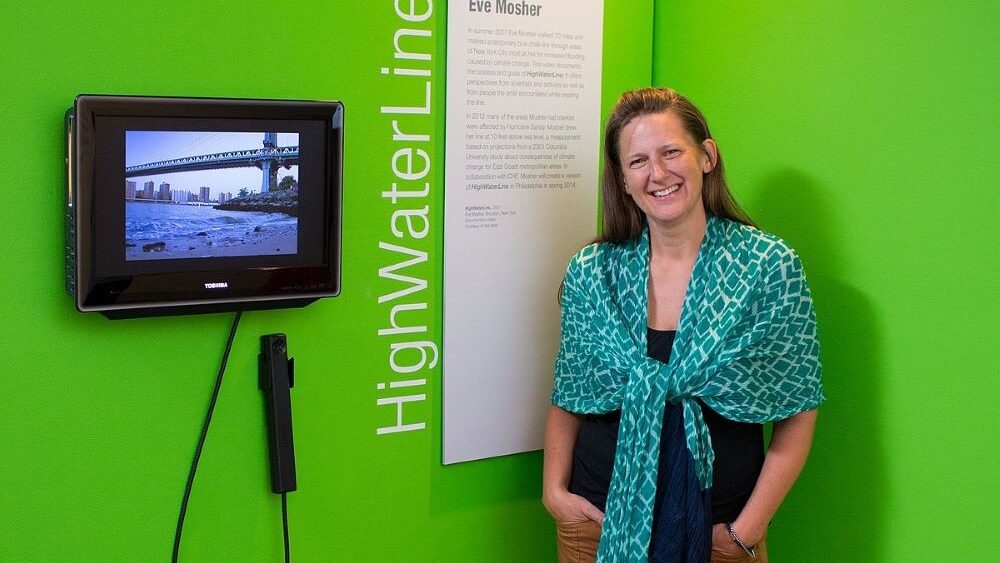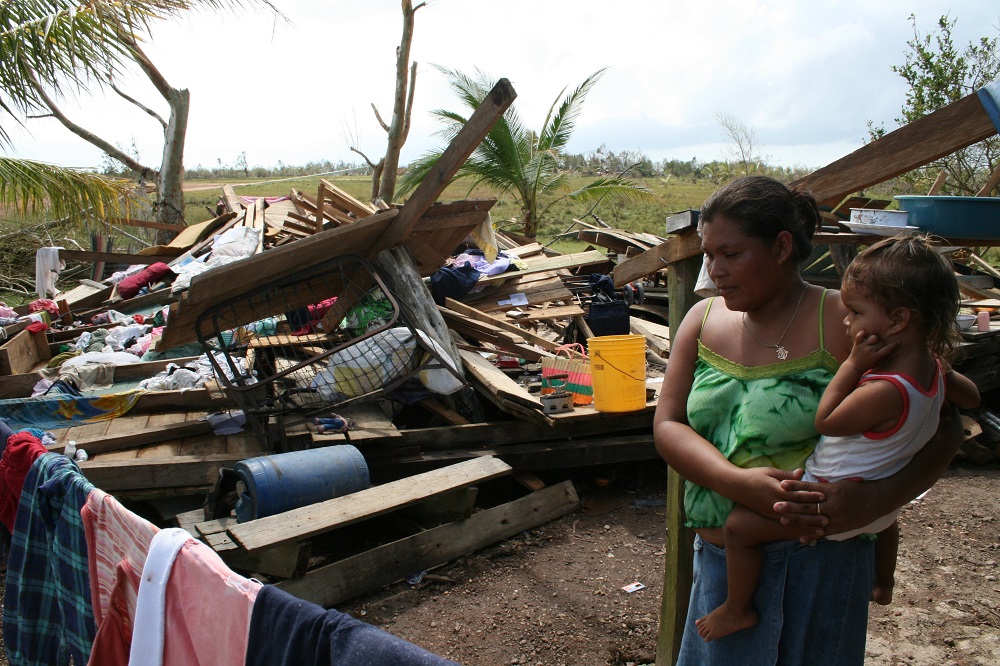In Conversation With… Ms. Zenaida Lauda-Rodriguez
An important aspect is that the main regulations on migration in the [Americas] include principles for the protection of human rights, and […] also incorporate aspects related to environmental and climatic dimensions.”
12 years after it was established, the Southern Common Market, MERCOSUR, a South American trade intergovernmental agreement, established the Specialized Forum on Migration (FEM). This forum allows MERCOSUR member states and associated states to discuss disaster displacement and work towards consolidating a migration integration process with a human rights approach, as further developed in the MERCOSUR Declaration of Principles on International Refugee Protection. As part of its 2023-2024 Workplan, the network held a two-day workshop in Brasilia on disaster displacement. Ms. Zenaida Lauda-Rodríguez, a lawyer actively associated with the South American Network for Environmental Migrations (RESAMA) and a member of the Advisory Committee of the Platform on Disaster Displacement (PDD) gives us insight into why a regional approach to disaster displacement is important for the Americas, and what we can learn with MERCOSUR.
PDD Secretariat: What are the key elements to ensure a comprehensive approach to address disaster displacement in South America? What are the main challenges?
Ms. Zenaida Lauda-Rodríguez: Among the key elements for a comprehensive approach to address human (in)mobility due to environmental factors in our region, including displacement in the context of disasters, four main elements apply to the Americas:
- Effective inclusion of regulatory frameworks, guidelines and recommendations by South American countries on human mobility, climate change and disaster risk management, from the national to the municipal and local levels;
- Established cross-cutting and multi-scale dialogues between the human mobility, climate change, and disaster agendas and articulated synergies at the regulatory and public policy level;
- Improved instruments for data collection and evidence on disaster displacement, seeking to integrate environmental, climate, disaster and human mobility indicators;
- Strengthened cooperation among South American countries for the implementation of good practices and regional actions that respond more adequately to the complexity of disaster displacement.
We can also mention challenges in implementing mechanisms and instruments that identify, monitor, and respond more adequately to mobility situations, whether due to disasters or slow-onset events. Such challenges include:
- The inclusion or clarification of mobility categories that respond more adequately to the various scenarios presented by the phenomenon;
- The standardization of categories and concepts that allow working in a cross-cutting manner between the agendas of human mobility, climate change and disaster risk management;
- The development of disaggregated databases that allow monitoring of the phenomenon, as well as the identification of specific groups at risk of mobility.
There are also challenges related to the understanding and research on the phenomenon of human mobility in the context of climate change and disasters. As such, there is a need for broader research on disaster displacement in the region to identify the various factors and particularities that characterize the contexts of Latin American countries. Additionally, there should be greater inter-institutional articulation and collaboration between key actors in sectors of public power, academia and organized civil society for the development of plans, measures and actions that respond to disaster displacement in a fairer way, taking into consideration the particular needs of the various affected groups.
PDD Secretariat: Why must the full cycle of disaster displacement be addressed from a human rights perspective?
Ms. Zenaida Lauda-Rodríguez: It is of utmost importance to utilize a human rights perspective when addressing different forms of human (in)mobility related to environmental factors. When people are displaced, they are particularly vulnerable to having their rights violated. Understanding that human rights are universal, inalienable, indivisible, interdependent, and interrelated, the violation of rights during the movement cycle often occur in a related, repetitive, and cyclical manner, adopting a systemic and systematic character. Systemic because the violation of one right generally entails or is connected to the violation of others, and systematic because the violation of rights can be maintained, repeated, aggravated, and aggregated throughout the movement cycle.
On the other hand, it is necessary to emphasize that there is currently no formal recognition of any category or categories that can be applied to people displaced in the context of disasters and the adverse effects of climate changes. This leads to the absence of regulatory and public policy instruments aimed at the effective protection of displaced people, leaving them in a situation of vulnerability, as well as exposed to the violation of various fundamental human rights, either because they are already in a situation of (im)mobility (more or less forced) or because they are at risk of being so.
PDD Secretariat: In what normative or other aspects have the South American countries shown the greatest progress in protecting people on the move?
Ms. Zenaida Lauda-Rodríguez: Generally speaking, the MERCOSUR Member States and Associated States have shown significant progress contemplating actions and policies mostly related to the management and handling of international migration and in border areas and the regularization of migratory documents, mainly in the context of disasters. Another important aspect is that the main regulations on migration in the region’s countries include principles for the protection of human rights, and in other cases, such as Bolivia and Argentina, they also incorporate aspects related to environmental and climatic dimensions. Important advances were also observed in disaster risk management (DRM), presenting regulations and guidelines that incorporate situations of human mobility, mainly forced displacement due to disasters.
For example, Bolivia’s Migration Law has a chapter that refers to migration due to climate change, establishing a definition of ‘climate migrants’, as well as measures for the protection of its nationals and the admission of persons displaced by the effects of climate change or situations of risk or threat to their lives. Other countries have seen progress in this area with the implementation of protection instruments like “humanitarian visas,” many of which are applied in situations of forced displacement due to disasters.
In particular, we highlight the “environmental humanitarian visa” adopted by Argentina for people displaced by socio-natural disasters in Mexico, Central America and the Caribbean. This regulation is an innovative policy in the region, with which the country seeks to address disaster displacement in a preventive, responsive and permanent manner.
PDD Secretariat: How can the countries of the MERCOSUR bloc enhance good practices to improve the protection of people displaced by disasters and the adverse effects of climate change?
Ms. Zenaida Lauda-Rodríguez: An important aspect of the workshop for the MERCOSUR countries was the opportunity for exchange among its members on the regulations, policies, implementation experiences, challenges and good practices that are currently applied in each country. This, together with the participation of members of international organizations, civil society and academia, provided a very fruitful space for discussion and exchange that allowed participants to understand the importance and need to address the issue of human mobility linked to environmental factors, as well as the challenges and possibilities that exist in terms of public policy, not only within the countries, but at the regional level. This undoubtedly constitutes a practice that has the potential to improve actions and protection measures for people who move due to environmental factors, including disaster displacement.
In order to enhance good practices at the regional level, countries in the Americas would benefit from the establishment of permanent spaces for discussion to exchange experiences and homogenize these practices. In this context, it is extremely important to have the participation of academia and organized civil society to contribute to understanding and constructing these practices based on the reality of the people affected. Likewise, it is important to involve public actors and managers working on migration and human mobility, climate change, and disaster risk management at different scales of action, mainly at the local level.
Finally, it is important to enhance the visibility and understanding of human mobility linked to the adverse effects of climate change and environmental degradation in the region to identify its development and dynamics in the particular contexts of each country. In this sense, there is a strong need for more research as well as efforts to create a regional database that compiles disaggregated and reliable data to serve as a basis for of the establishment of new public policies.
Cover photo: © IOM





